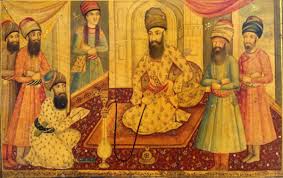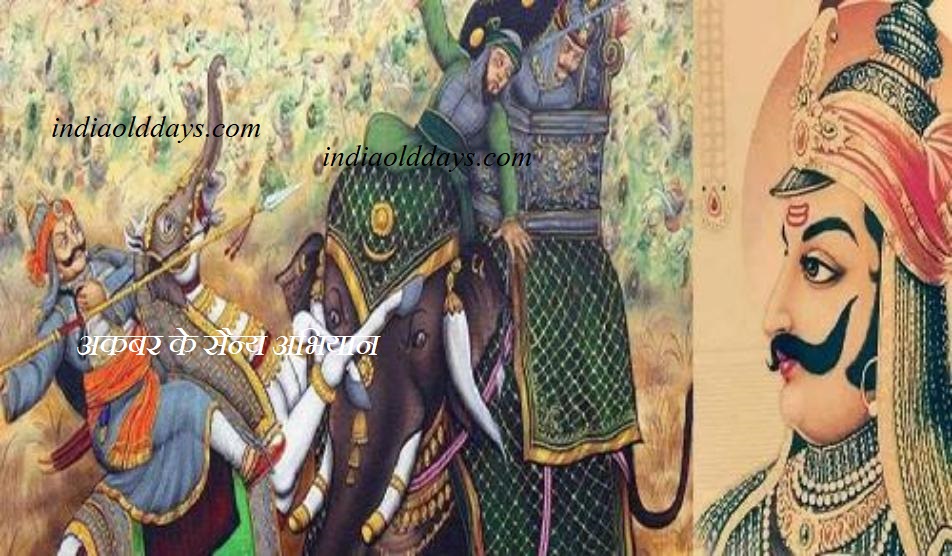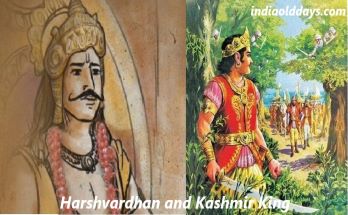Religious policy of Mughal Emperor Akbar
Other important facts-
- Akbar military campaign at a glance
- Explain the Rajput policy of Akbar
- Introduction of life of Mughal emperor Akbar
- Where was the expanse of Akbar;s empire
- Introduction of life of Mughal emperor Akbar
The basic purpose of Akbar’s religious policy was universal tolerance. It was also known as the principle of peace with all, ie peaceful behavior with all. The akbar adopted the policy of peace in place of Islamic doctrine. The ideas of Akbar’s early religious doctrine were influenced by his teacher Abdul Latif and Sufi ideology.
In order to debate the philosophical and theological subjects, Akbar established aibaadatakhaana
(prayer-building) in his capital Fatehpur Sikri in 1575 AD.
Akbar had the craving for greater knowledge about Islam’s religion behind the creation of aibaadatakhaana. Akbar initially invited Islam only to the Apostolas in Islam. But later in 1578 AD, he was unhappy with his conduct. In the beginning, he started inviting all the scholars, that is, he made the religion.
To take all the religious matters in his hands, Akbar, in 1579 AD, A Mhazrnama or a manifesto was issued in Who made him supreme in the affairs of religion. This was the sign of five auspices or Islamic theologians.
Mhazr Smith and Bulgeley Hague said the exact order. Mhazr After the release of , Akbar assumed the title of Sultan-e-Adil or Imam-e-Adil (Justice Ruler). In this document (Mhazr ) it has been called .Amir al-Mu’minin.
Sheikh Mubarak had prepared the draft of a document named Mhazr , but the motivation for issuing it was given by Sheikh Mubarak and his two sons Abul Fazal and Faizi.
Akbar had announced the principle of Mhazrnama , to reduce the opposition of the ulemas and to save the dignity of the kingdom.
To reconcile all faiths in Akbar, 1582 AD Introduced a new religion named Tauhid-e-Elahi (Divine ekeshwarvad) or Din-i-Elahi.
Tauhid-e-Elahi was, in fact, an idea method based on Sufi pantheism. The motivation for which the motivation was sulahakula or universally received was harmony.
The chief priest of this new sect (Din-i-Elahi) was Abul-Fazal. Only Maheshadas (aka Birbal) in the Hindus had accepted it.
In the new religion, there was a fixed day for diksha. And during this initiation, the devotee had to say that Akbar’s beloved echo was Allah-i-Akbar.
Jesuit writer Bartoli has said about Deen-Elahi – that it was a combination of various elements which were partly to the Koran of Muhammad, the texts of Brahmins and to a lesser extent the gospel of Jesus
Christ.
While according to Vincent Smith, Deen-e-Elahi was a memorial of Akbar’s mistake, not wisely.
Abul Fazl has written in Ain Akbari that the empire is a ray that is capable of publishing the entire universe. Which is said in the contemporary language, Khara (Supernatural Prakashmandal).
In Dina-e-Elahi religion, the Dikshit disciple had to complete four steps namely, Chehargana-i-Ikhlas. These were the four steps- Land, property, honor and religion.
The main reason for the failure of Din-i-Elahi was the then conservative circumstances.
Abul Fazal talks about the inclusion of these four elements – in the emperor Akbar – the air, water and land. In comparison, they compare the warriors with fire, compared to artisans and merchants from the air, compared scholars with water and farmers compared to the land.
Expressing faith in Sufism, Akbar encouraged the Chishti community. She was the supreme devotee of Shaikh Salim Chishti and on the same name, the name of the son is Salim Raka.
In 1583 AD, Akbar In a new collender – Ilai Sanvat released.
Because of sympathy for the noble ideas, Akbar should face the heavy opposition of the Mullahs.
Akbar had abolished pilgrimage tax on holy places like Prayag and Banaras.
Badayuni had prepared a long list of Akbar’s anti-Islamic activities, in which he had said that in 1580 AD In this, he ordered the Muslims to shave their beard, closed Hajayatra and banned Muslim festivals and roses.
Two classical texts related to Sufi pantheism – Masanavi of Jalaluddin Rumi and Diwan of Hafiz were two favorite books of Akbar.
1583 AD Before Akbar was quoted in the post of Kalmas and Khalifas, but in 1583 AD After that, the verses describing the glory of the sun and moon began to be mentioned on them.
Akbar gave importance to all the religions and invited the scholars of different religions to his ibadatakhane.
Invited the religions in ibadatakhane –
- Hindu religion- Goddess and Purushottam.
- Jainism- Harivijay Sari, Jina Chandra Suri
- Zoroastrianism – Dastur Mehr ji Rana
- Christianity – Ekbeva and Monserrate
Akbar was most influenced by Hinduism.
Akbar gave the fiefdom of Gokul Av Jatpura to Vithal Nath, son of Vallabhacharya.
Akbar gave the title of Jagatguru and Jinchandrasuri to the teacher of Jain religion, Harivijay Suri, and the title of Yug Pradhan.
Akbar had given 200 bigha of land to the life of a priest of Parsi religion, Dastur Mehr ji Rana. And ordered the 24-hour fire to fire in his court due to his influence.
Akbar started the Zoroastrian philosophy of Tuladan, and PaiBoss, like the Parsi traditions.
Akbar called on the third Guru of the Sikhs- Amardas and gave several villages in the name of his daughter.
Akbar sent Guru Ramdas to 1577 AD. In 500 bighas provided land. There was also a natural pond. Here, at Amritsar, the city of Amritsar and the Golden Temple were constructed.
Fatehpur Sikri’s template was prepared by Bahawaddin.
The Jesuit mission of Christians in the court of Akbar came three times.
In the court of Akbar 1580 AD Father Anbevi had led the first Jesuit to come in (Fatehpur Sikri).
Akbar tried to stop Sati’s practice, widowed marriage was given legal recognition, prohibited the sale of liquor, and fixed age of marriage and sex of marriage between 16 and 14 years.
Reference : https://www.indiaolddays.com/





